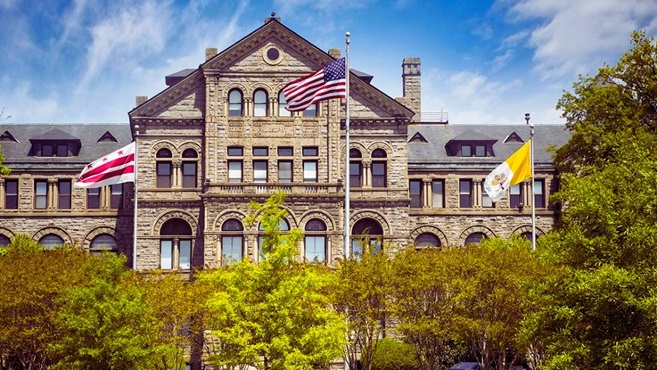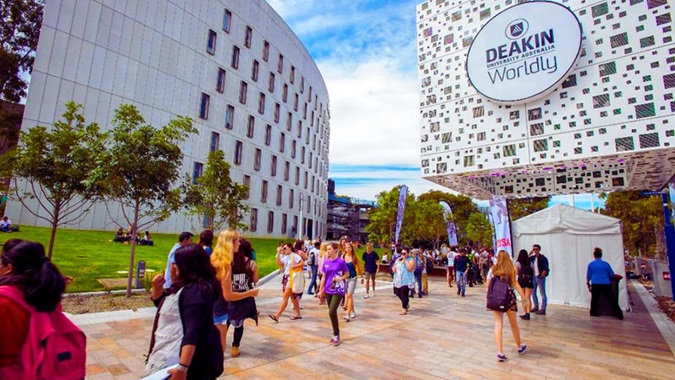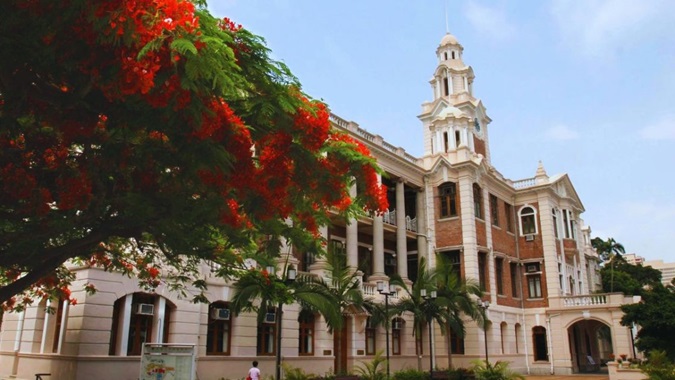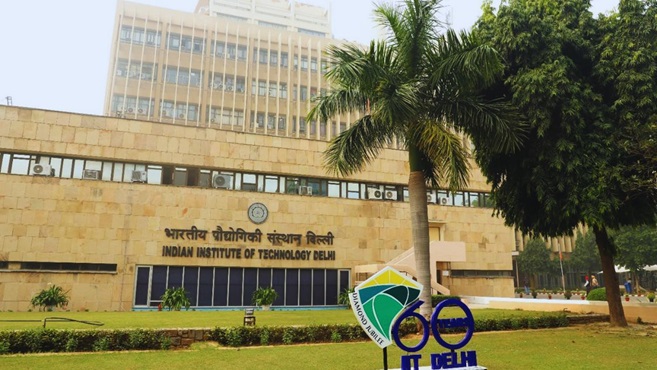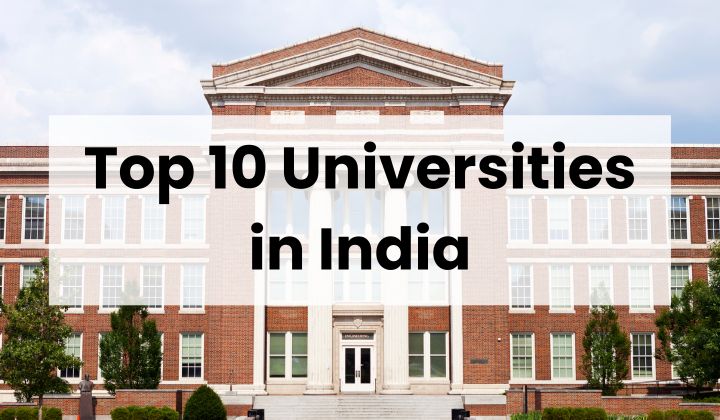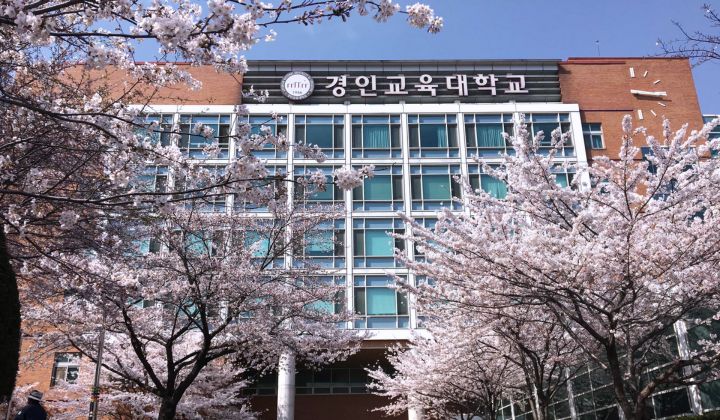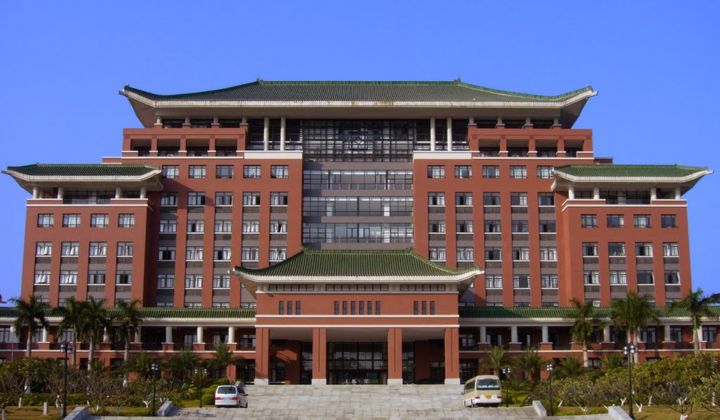In the realm of global education, the United States stands tall with its prestigious universities that attract students from around the world. This article delves into the top 5 universities in America, providing the latest information, facts, figures, courses offered, notable alumni, and lesser-known interesting tidbits.
1. Harvard University
Overview
Harvard University, established in 1636, is the oldest higher education institution in the United States. Located in Cambridge, Massachusetts, Harvard is renowned for its academic excellence, groundbreaking research, and notable alumni. The university’s long history and tradition of fostering intellectual growth have made it one of the most respected institutions globally.
Facts and Figures
- Location: Cambridge, Massachusetts
- Total Enrollment: Over 20,000 students
- Endowment: $41.9 billion (2023)
- Acceptance Rate: 4.6%
- Faculty: Over 2,400 faculty members
Harvard’s endowment is the largest of any academic institution in the world, enabling it to offer extensive financial aid programs. The university boasts a student-to-faculty ratio of 7:1, ensuring personalized attention and mentorship.
Courses Offered
Harvard offers a wide range of undergraduate, graduate, and professional courses across its various schools, including:
- Harvard Business School: Business Administration (MBA)
- Harvard Law School: Juris Doctor (JD)
- Harvard Medical School: Doctor of Medicine (MD)
- Harvard John A. Paulson School of Engineering and Applied Sciences: Computer Science, Engineering
- Faculty of Arts and Sciences: Economics, Political Science, Psychology
Harvard is known for its interdisciplinary approach, encouraging students to engage in research and projects that span multiple fields of study.
Notable Alumni
Harvard has produced numerous influential figures across various fields. Some of the most notable alumni include:
- Barack Obama: 44th President of the United States
- Mark Zuckerberg: Co-founder and CEO of Facebook
- Sheryl Sandberg: COO of Facebook
- John F. Kennedy: 35th President of the United States
- Bill Gates: Co-founder of Microsoft (attended but did not graduate)
Little-Known Fact
Harvard’s Widener Library, one of the largest university libraries in the world, was established in memory of Harry Elkins Widener, a Harvard alumnus who perished in the Titanic disaster. The library contains over 3.5 million books and is a treasure trove for researchers.
Campus Life and Culture
Harvard’s campus life is vibrant, with over 400 student organizations covering a wide range of interests, from performing arts and media to politics and social activism. The Harvard Crimson, the student newspaper, and the Harvard Lampoon, a humor magazine, are among the oldest and most prestigious student publications in the country.
The university also offers numerous athletic programs, with 42 varsity teams competing in the Ivy League. Harvard’s athletic facilities include the historic Harvard Stadium, the nation’s oldest concrete stadium, which hosts football games and other events.
Research and Innovation
Harvard is a powerhouse of research and innovation. The university receives substantial funding for research from various sources, including federal agencies, private foundations, and industry partners. Harvard researchers are at the forefront of breakthroughs in fields such as genetics, computer science, public health, and environmental studies.
Harvard’s innovation ecosystem includes the Harvard Innovation Labs, a hub for entrepreneurship and startup incubation. The labs provide resources and support for students and faculty to turn their ideas into viable businesses, fostering a culture of innovation and collaboration.
2. Stanford University
Overview
Stanford University, founded in 1885 by Leland and Jane Stanford, is located in the heart of Silicon Valley, California. It is renowned for its entrepreneurial spirit and close ties to the tech industry. The university’s sprawling 8,180-acre campus is one of the largest in the United States, providing a picturesque and conducive environment for learning and innovation.
Facts and Figures
- Location: Stanford, California
- Total Enrollment: Approximately 15,878 students
- Endowment: $37.8 billion (2023)
- Acceptance Rate: 4.3%
- Faculty: Over 2,200 faculty members
Stanford’s endowment and its strategic location in Silicon Valley have made it a hub for technological advancements and business ventures. The university has a student-to-faculty ratio of 5:1, ensuring intimate class sizes and strong faculty engagement.
Courses Offered
Stanford offers diverse programs across seven schools. Some of the popular courses include:
- School of Engineering: Computer Science, Electrical Engineering, Mechanical Engineering
- Graduate School of Business: Master of Business Administration (MBA)
- School of Law: Juris Doctor (JD)
- School of Medicine: Doctor of Medicine (MD)
- School of Humanities and Sciences: Economics, Psychology, Political Science
Stanford’s interdisciplinary approach encourages collaboration across different fields, fostering a holistic educational experience.
Notable Alumni
Stanford has produced many influential figures, particularly in the tech industry. Some of the notable alumni include:
- Elon Musk: CEO of Tesla and SpaceX
- Larry Page and Sergey Brin: Co-founders of Google
- Reed Hastings: Co-founder and CEO of Netflix
- Sundar Pichai: CEO of Alphabet Inc. and Google
- Tiger Woods: Professional golfer
Little-Known Fact
The Stanford Linear Accelerator Center (SLAC) is home to one of the longest linear particle accelerators in the world, measuring two miles in length. This facility has been instrumental in numerous scientific discoveries, including research that led to Nobel Prizes in physics.
Campus Life and Culture
Stanford’s campus life is dynamic and diverse, with over 650 student organizations catering to a wide range of interests. The Associated Students of Stanford University (ASSU) is the student government, playing a crucial role in organizing events and representing student interests.
Athletics are a significant part of Stanford’s culture, with 36 varsity sports teams known as the Cardinal. Stanford has a storied history in collegiate athletics, boasting numerous NCAA championships across various sports.
Research and Innovation
Stanford is a global leader in research and innovation, with extensive funding and resources dedicated to advancing knowledge and solving real-world problems. The Stanford Research Park, located adjacent to the campus, is home to numerous tech companies and startups, creating a synergistic environment for innovation.
The university’s Office of Technology Licensing (OTL) has facilitated the commercialization of groundbreaking technologies developed at Stanford, resulting in numerous successful startups and patents. Notable inventions originating from Stanford include the Google search algorithm, recombinant DNA technology, and the FM synthesis technique used in audio synthesis.
3. Massachusetts Institute of Technology (MIT)
Overview
Founded in 1861, MIT is a private research university in Cambridge, Massachusetts. It is famous for its cutting-edge research and innovations in technology and science. MIT’s mission is to advance knowledge and educate students in science, technology, and other areas of scholarship that will best serve the nation and the world.
Facts and Figures
- Location: Cambridge, Massachusetts
- Total Enrollment: Around 11,520 students
- Endowment: $20.9 billion (2023)
- Acceptance Rate: 6.7%
- Faculty: Over 1,000 faculty members
MIT’s endowment and its emphasis on research and innovation have made it a leader in science and technology. The university maintains a student-to-faculty ratio of 3:1, fostering close mentorship and collaboration.
Courses Offered
MIT is known for its STEM (Science, Technology, Engineering, Mathematics) programs. Key courses include:
- School of Engineering: Computer Science, Mechanical Engineering, Electrical Engineering
- School of Science: Physics, Chemistry, Biology
- Sloan School of Management: Master of Business Administration (MBA)
- School of Architecture and Planning: Architecture, Urban Studies and Planning
- School of Humanities, Arts, and Social Sciences: Economics, Political Science, Philosophy
MIT encourages interdisciplinary study and research, allowing students to tailor their education to their interests and career goals.
Notable Alumni
MIT’s alumni network includes numerous influential figures in various fields. Some of the notable alumni include:
- Kofi Annan: Former Secretary-General of the United Nations
- Richard Feynman: Nobel Laureate in Physics
- Buzz Aldrin: Astronaut and second person to walk on the moon
- A. G. Lafley: Former CEO of Procter & Gamble
- I. M. Pei: Renowned architect
Little-Known Fact
MIT’s “hacks” or pranks are legendary. One famous hack involved placing a full-sized replica of a campus police car on the roof of the Great Dome. These elaborate pranks showcase the creativity and technical skills of MIT students.
Campus Life and Culture
MIT’s campus life is rich with opportunities for personal and professional growth. The university has over 500 student organizations, including academic clubs, cultural associations, and recreational groups. The MIT Tech, the student newspaper, and the MIT Logarhythms, an a cappella group, are among the many student-run initiatives.
Athletics also play a role at MIT, with 33 varsity sports teams known as the Engineers. The university’s athletic facilities include the Zesiger Sports and Fitness Center, which offers a wide range of fitness and recreational activities.
Research and Innovation
MIT is at the forefront of research and innovation, with a focus on solving pressing global challenges. The university receives significant funding from government agencies, private foundations, and industry partners, enabling it to conduct groundbreaking research.
The MIT Media Lab is a renowned interdisciplinary research lab that explores the intersection of technology, media, and design. The lab has been instrumental in developing technologies such as the e-reader, wearable computing, and the Scratch programming language for children.
MIT’s Office of Innovation and Entrepreneurship supports students and faculty in turning their ideas into successful ventures. The MIT $100K Entrepreneurship Competition is one of the largest and most prestigious startup competitions, attracting innovative business ideas from around the world.
4. California Institute of Technology (Caltech)
Overview
Caltech, located in Pasadena, California, was founded in 1891. It is a small but mighty institution, renowned for its strength in engineering and natural sciences. Caltech’s mission is to expand human knowledge and benefit society through research integrated with education.
Facts and Figures
- Location: Pasadena, California
- Total Enrollment: Approximately 2,240 students
- Endowment: $4.1 billion (2023)
- Acceptance Rate: 6.4%
- Faculty: Over 300 faculty members
Caltech’s small size and emphasis on research create an intimate and rigorous academic environment. The university has a student-to-faculty ratio of 3:1, ensuring close mentorship and collaboration between students and faculty.
Courses Offered
Caltech offers specialized programs with a strong emphasis on science and engineering. Notable courses include:
- Division of Physics, Mathematics, and Astronomy: Physics, Mathematics, Astronomy
- Division of Chemistry and Chemical Engineering: Chemistry, Chemical Engineering
- Division of Biology and Biological Engineering: Biology, Bioengineering
- Division of Engineering and Applied Science: Computer Science, Mechanical Engineering, Electrical Engineering
- Division of Humanities and Social Sciences: Economics, History, Philosophy
Caltech encourages interdisciplinary study and research, allowing students to work on projects that span multiple fields.
Notable Alumni
Caltech’s alumni network includes many influential scientists and engineers. Some of the notable alumni include:
- Albert Einstein: Renowned theoretical physicist and Nobel Laureate (Visiting Professor)
- Gordon Moore: Co-founder of Intel
- Nobel Laureates: Over 35 alumni have won Nobel Prizes
- Charles Townes: Inventor of the maser and laser
- Frank Capra: Academy Award-winning film director
Little-Known Fact
Caltech manages the Jet Propulsion Laboratory (JPL), a NASA field center that has designed and managed many of America’s space missions, including the Mars rovers. This partnership underscores Caltech’s leading role in space exploration and research.
Campus Life and Culture
Caltech’s campus life is centered around its House System, which provides a supportive and close-knit community for students. There are eight undergraduate houses, each with its own unique culture and traditions. The houses host various social events, fostering a sense of camaraderie and belonging among students.
Athletics and recreation are also important at Caltech, with 17 varsity sports teams known as the Beavers. The university’s athletic facilities include the Braun Athletic Center, which offers a range of fitness and recreational activities.
Research and Innovation
Caltech is a leader in research and innovation, with a focus on addressing some of the world’s most pressing challenges. The university receives substantial funding from government agencies, private foundations, and industry partners, enabling it to conduct pioneering research.
The Caltech Resnick Sustainability Institute is dedicated to advancing sustainable energy and environmental solutions. The institute supports interdisciplinary research in areas such as solar energy, energy storage, and climate science.
Caltech’s Office of Technology Transfer and Corporate Partnerships facilitates the commercialization of technologies developed at the university. This office has helped launch numerous successful startups and secure patents for groundbreaking inventions.
5. University of Chicago
Overview
The University of Chicago, founded in 1890 by John D. Rockefeller, is a private research university known for its rigorous academics and impactful research. Located in the Hyde Park neighborhood of Chicago, Illinois, the university has a long-standing tradition of challenging conventional wisdom and fostering intellectual inquiry.
Facts and Figures
- Location: Chicago, Illinois
- Total Enrollment: Around 16,445 students
- Endowment: $10.3 billion (2023)
- Acceptance Rate: 6.2%
- Faculty: Over 2,300 faculty members
The University of Chicago’s endowment and commitment to academic excellence have made it a leading institution for higher education and research. The university maintains a student-to-faculty ratio of 5:1, ensuring personalized attention and mentorship.
Courses Offered
The University of Chicago offers a wide range of programs across various disciplines. Popular courses include:
- Booth School of Business: Master of Business Administration (MBA)
- Law School: Juris Doctor (JD)
- Pritzker School of Medicine: Doctor of Medicine (MD)
- Division of the Social Sciences: Economics, Political Science, Sociology
- Division of the Humanities: Philosophy, History, English
The university’s core curriculum, known as the Common Core, ensures that all undergraduate students receive a broad-based education that emphasizes critical thinking and interdisciplinary learning.
Notable Alumni
The University of Chicago has produced numerous influential figures across various fields. Some of the notable alumni include:
- Milton Friedman: Nobel Laureate in Economics
- Carl Sagan: Renowned astronomer and author
- Bernard S. Arnault: CEO of LVMH
- Larry Ellison: Co-founder of Oracle Corporation
- Saul Bellow: Nobel Laureate in Literature
Little-Known Fact
The University of Chicago is home to the world’s first artificial nuclear reactor, Chicago Pile-1, which was developed under the stands of Stagg Field in 1942 by Enrico Fermi and his team. This groundbreaking achievement marked the beginning of the atomic age and has had profound implications for science and technology.
Campus Life and Culture
The University of Chicago’s campus life is vibrant and diverse, with over 450 student organizations catering to a wide range of interests. The university’s location in Hyde Park provides students with access to a rich cultural and intellectual environment.
The university’s athletic teams, known as the Maroons, compete in the NCAA Division III. The Ratner Athletics Center provides state-of-the-art facilities for fitness and recreation, supporting a healthy and active campus community.
Research and Innovation
The University of Chicago is a powerhouse of research and innovation, with extensive funding and resources dedicated to advancing knowledge and solving real-world problems. The university receives significant funding from government agencies, private foundations, and industry partners, enabling it to conduct groundbreaking research.
The Polsky Center for Entrepreneurship and Innovation supports students and faculty in turning their ideas into successful ventures. The center offers resources such as mentorship, funding, and networking opportunities, fostering a culture of innovation and entrepreneurship.
The university’s Argonne National Laboratory is one of the largest and most prestigious research facilities in the United States. Argonne conducts research in areas such as energy, materials science, and national security, contributing to scientific advancements and technological innovations.
Conclusion
The top 5 universities in America—Harvard, Stanford, MIT, Caltech, and the University of Chicago—stand out not only for their academic excellence but also for their contributions to various fields, their notable alumni, and their unique characteristics. These institutions continue to shape the future through education, research, and innovation, making them dream destinations for students worldwide.
By understanding the strengths and unique aspects of each of these universities, prospective students can make informed decisions about their higher education journeys. Whether it’s Harvard’s historical legacy, Stanford’s tech innovation, MIT’s scientific breakthroughs, Caltech’s engineering prowess, or the University of Chicago’s intellectual rigor, each university offers a distinct experience that few others can match.
These universities are not just places of learning; they are communities where ideas are nurtured, leaders are developed, and the future is shaped. The legacy of excellence, the pursuit of knowledge, and the commitment to societal betterment make these institutions the epitome of higher education in America.

